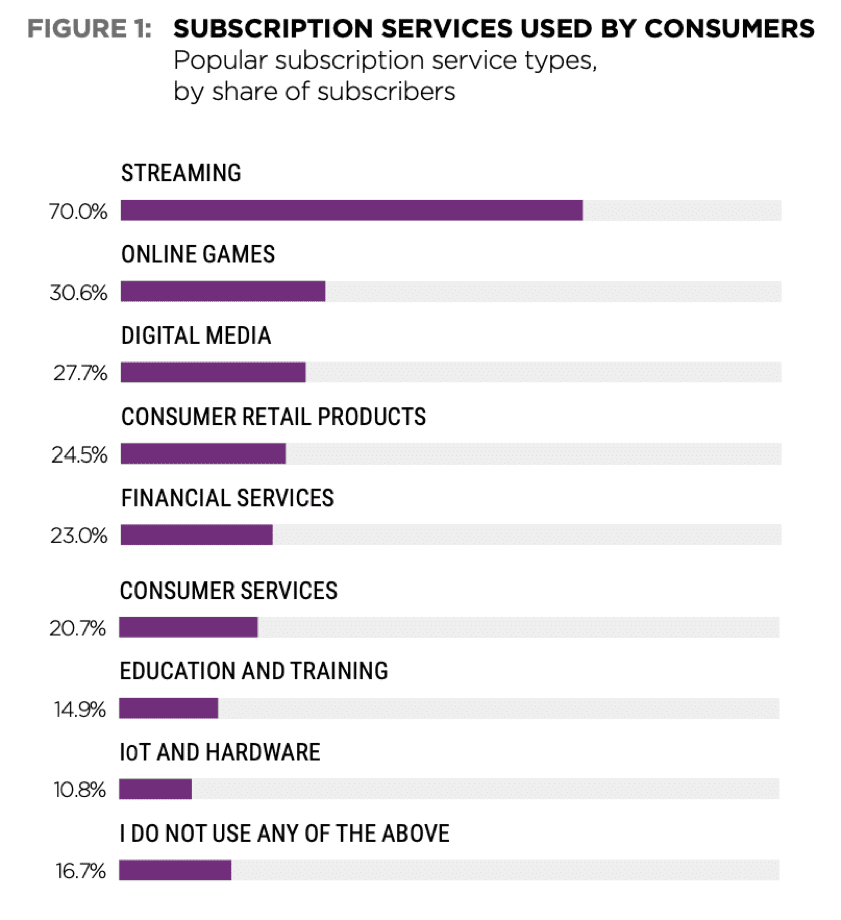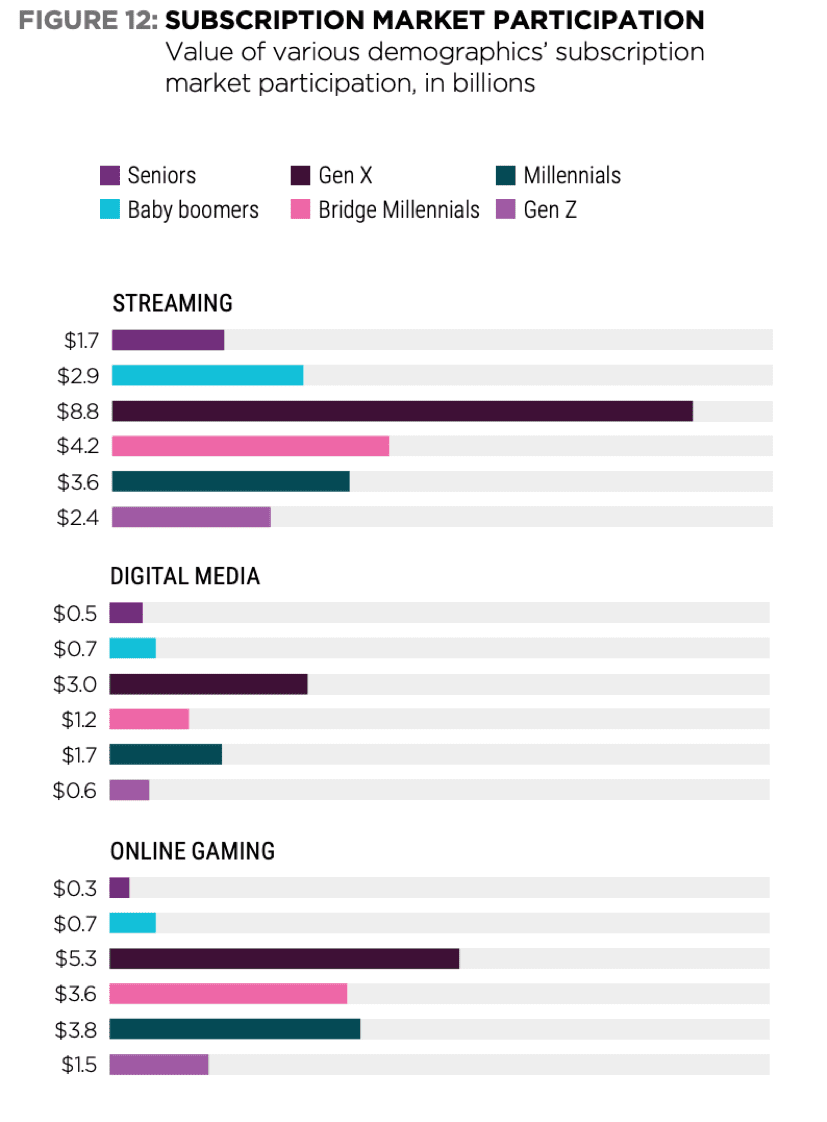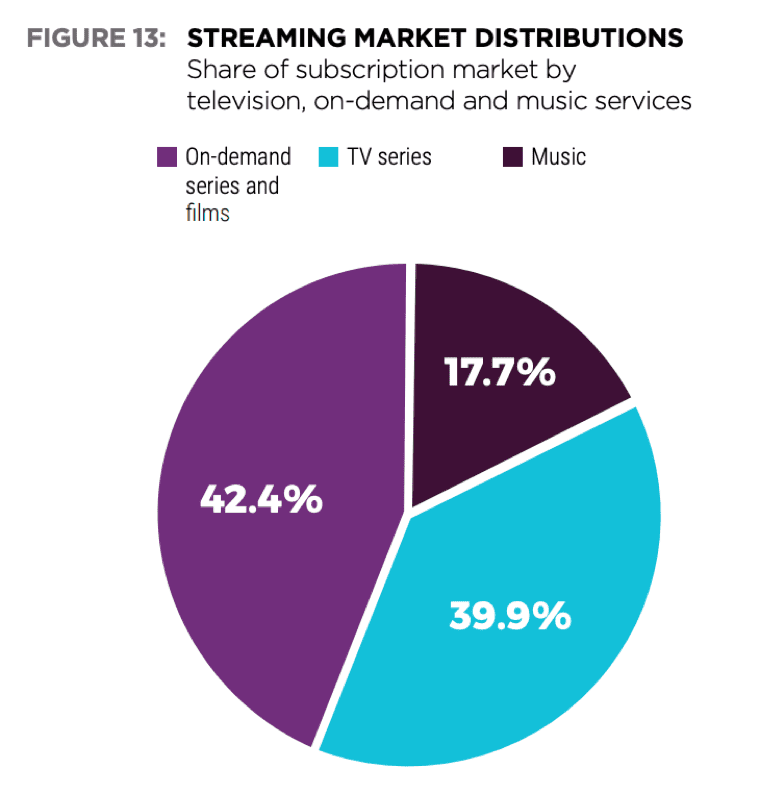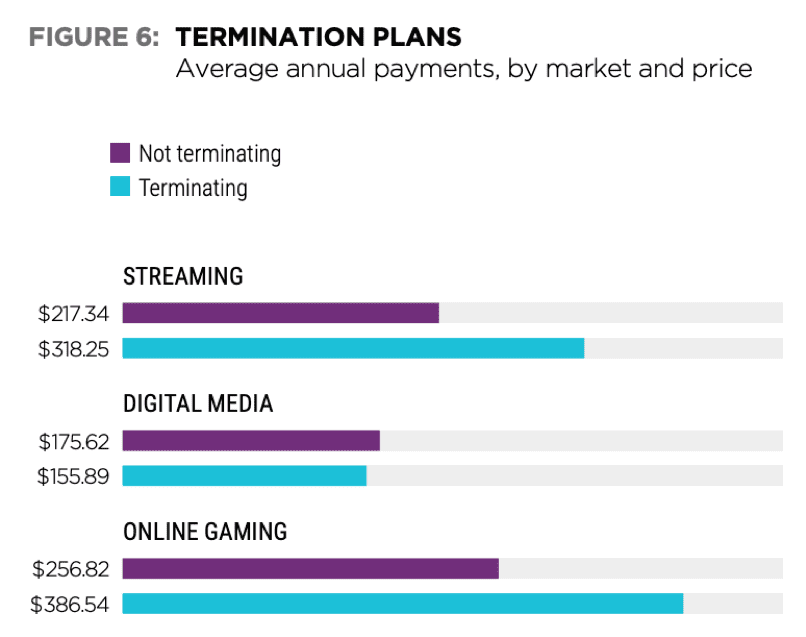Why Streaming Services Dominate Subscription Commerce

The streaming market is an increasingly competitive space. AT&T’s WarnerMedia is planning to launch HBO Max, while Disney+ and Apple TV will also start giving Netflix a run for its money soon.
And despite Netflix recently touting stats – like the fact that a record 40.7 million accounts had watched Stranger Things 3 since its debut July 4, and that 13 percent of ex-Netflix users signed up again to watch the third season – Netflix saw its stock drop after announcing that “The Office” would be removed from its platform in 2021.
Offering a combination of original content and viewer favorites is just one way services are attempting to create competitive differentiation. The latest Subscription Commerce Conversion Index goes a step farther, exploring how consumers use streaming services and what keeps them from canceling subscriptions.
Subscription commerce encompasses a vast range of products and services – from wardrobe items to everyday word processing software to audiobooks. According to the Subscription Commerce Conversion Index, 83.3 percent of consumers subscribe to at least one form of service.
But those services fall disproportionately into the streaming category, with the most popular services being entertainment-related. Streaming is by far the most common subscription service (70 percent), while online games (30.6 percent) and digital media (27.7 percent) are used by fewer than half that figure.

Delving into those top three subscription types, the streaming market is valued at an estimated $23.5 billion, a figure representing 0.12 percent of the United States’ gross domestic product (GDP). The online gaming market is valued at approximately $15.3 billion, roughly twice as much as the digital media market’s $7.7 billion.
Despite persistent focus on millennials, the study found it is Generation X who is driving streaming subscription market growth, spending nearly $8.8 billion annually on such services. That’s more than twice the spending of bridge millennials ($4.2 billion), the subset of millennial consumers between 30 and 40 years of age.
Generation X also spent the most on digital media subscriptions ($3 billion) and online gaming ($5.3 percent).

The Subscription Commerce Conversion Index took a granular look at which types of streaming services had the largest shares of the market. On-demand series and films represent the highest streaming market share at 42.4 percent, slightly higher than on-demand series and film subscriptions through TV services and satellite providers (39.9 percent). Music holds the smallest share at 17.7 percent.

When looking at digital media, eBooks make up the highest share of offerings at 35.1 percent. Magazines account for 30.7 percent, while newspapers comprise 25.9 percent. Audio books are responsible for the remaining 8.3 percent of the market.
Streaming services also earned the highest Index score at 66.5 out of 100 points, while digital media earned an average of 61.5, coming in second place. The high mark given to streaming services is likely due to a combination of factors.
Streaming services made the best first impression on potential subscribers; 90.7 percent of streaming services subscribers said they were “very” or “extremely” satisfied with initial onboarding. These figures were lower, but still fairly high for digital media (82.5 percent) and online gaming (83.3 percent).
The study also found a connection between the length of a user’s loyalty to a subscription service. Streaming services were the most likely to have consumers as subscribers for more than five years. Nearly one in five subscribers (17.4 percent) fell into this category, compared to the 10.8 percent who had maintained an online gaming subscription for more than five years.
Streaming services subscribers’ likelihood of terminating their subscriptions in the next year is also lowest among the top three entertainment-related categories. Just 8 percent of streaming services subscribers plan to abandon a subscription, a figure that falls to only 3 percent for those who have subscribed to a streaming service for more than five years.
Despite high levels of satisfaction and lower levels of planned termination, the biggest factor for possibly terminating a streaming subscription was price. Subscribers who pay an average of $318.25 annually are more likely to cancel than those with an average payment of $217.34. Price as motivation for termination is felt even more acutely for online gaming subscriptions.

Digital content subscription providers must consider how they can foster long-term loyalty, since that appears to be the key to slowing down customer churn. The best approach is to understand the features subscribers value most, and then offer those options at competitive prices to boost retention.
